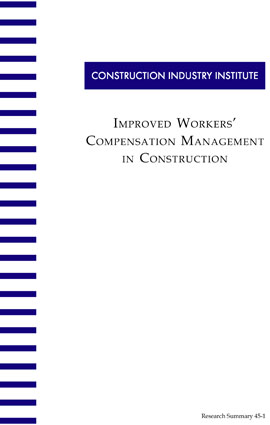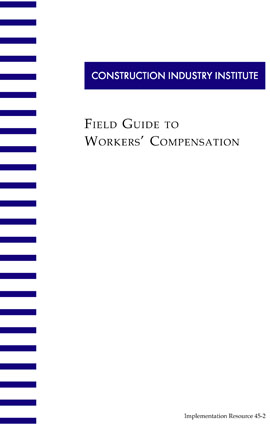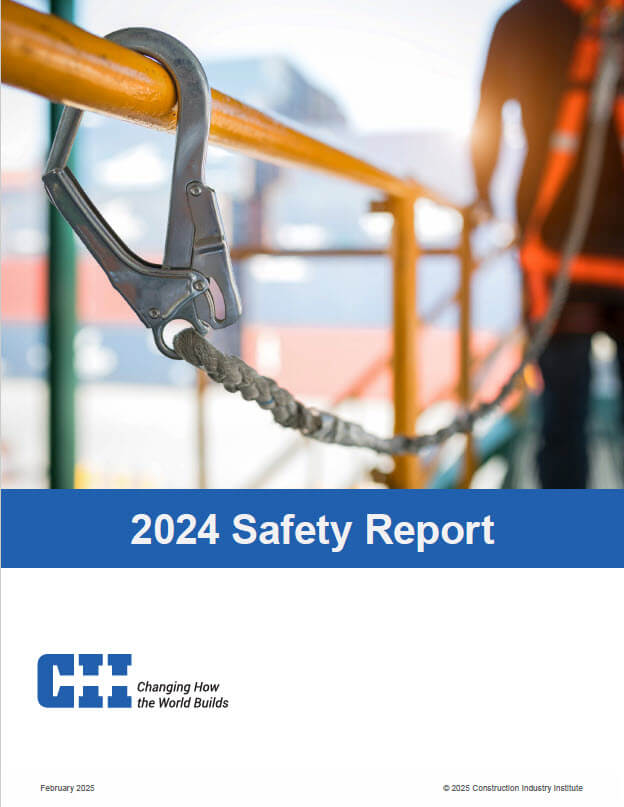
Improved Workers' Compensation Management in Construction
Workers’ compensation (W/C) is one of the most pressing problems in the construction industry today. Each of the 50 states has a workers’ compensation law; however, each has wide differences in the costs, benefits, and administration of these laws. To compound the problem, many owners who require the services of a contractor or subcontractors are using the Experience Modification Rate (EMR) as the sole indicator to evaluate a contractor’s safety performance.
The purpose of this research was:
- To study workers’ compensation practices in the construction industry
- To identify key elements of effective workers’ compensation management
- To examine the validity of using the EMR as a sole indicator of contractor safety performance, while at the same time identifying additional evaluation criteria
The CII Workers’ Compensation Insurance Research Team, which conducted the studies, estimated the potential cost savings of implementing improved management practices for workers’ compensation issues in construction. The projections show a potential of $340 million annual savings to the industry.
In this publication, 13 possible courses of action are recommended to reduce the costs associated with workers’ compensation claims. Obviously, the best course of action is to adopt a “zero accident” philosophy and improve safety on projects, thus minimizing the source of claims. Accidents do occur, however, so an efficient system for responding when injuries occur is needed. Besides the 13 courses of action, the team has recommended four additional measures for contractor selection criteria related to safety.
Companies can undertake 13 possible courses of action to manage and reduce the costs associated with workers’ compensation insurance premiums and claims. (RS45-1, p. 21) In no particular order, these are:
- Prevent injuries by implementing the recommendations of the CII Zero Accidents Task Force as contained in CII Special Publication 32-2, Zero Injury Economics.
- Identify high-risk workers’ compensation jurisdictions when pursing business opportunities.
- Educate employers, employees, and employee representatives about workers’ compensation and its impact on business.
- Use post-employment medical health screening to identify appropriate work assignments for employees.
- Participate in the selection of medical providers.
- Use modified work programs for injured employees so that they can continue to work without further risk of injury to themselves or others.
- Actively manage the relationship and work processes with the insurance carrier/provider.
- Participate in approving/denying claims; watch for and investigate possible fraud.
- Maintain contact with injured employees to be sure their needs are being met and to keep them informed of worksite activates.
- Drive accountability for workers’ compensation costs down to projects and supervisors.
- Provide on-site first aid capabilities, commensurate with the size of the job.
- Place safety and workers’ compensation within the same organizational unit with clear expectations for close coordination.
- Evaluate subcontractors’ safety and workers’ compensation performance using the same guidelines as for the prime contractor.
EMR has become too emphasized by Owners as a single measure of contractor safety performance. Consider the following four additional measures for contractor selection related to safety: (RS45-1, p. 23)
- OSHA incident rates for recent years, for actual construction work
- Contractor’s safety program, and actual practices followed
- A new metric proposed by RT-45, the WCCFI (Workers’ Compensation Claims Frequency Indicator)
- Specific performance of the proposed project manager in the above criteria
{^widget|(widget_displayname)WatermarkImage|(name)WatermarkImage|(image)%7e%2fCII%2fmedia%2fPublications%2f45_1Table1.PNG%3fext%3d.png|(width)|(height)^}



